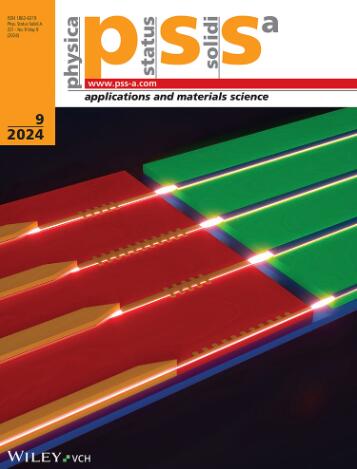Process Model for SiC Oxidation for a Large Range of Conditions
IF 1.9
4区 材料科学
Q3 MATERIALS SCIENCE, MULTIDISCIPLINARY
Physica Status Solidi A-applications and Materials Science
Pub Date : 2024-07-17
DOI:10.1002/pssa.202400234
引用次数: 0
Abstract
A comprehensive process model for 4H‐SiC oxidation is created and calibrated against a very large collection of experimental data. The model reproduces measured oxide thickness for Si‐face, C‐face, and a‐face SiC wafers, in the temperature range 950–1500 °C, in the pressure range 0.25–4.0 atm, in the thickness range 3–1600 nm, and for SiC doping ranging between 10大范围条件下的碳化硅氧化工艺模型
建立了一个 4H-SiC 氧化综合工艺模型,并根据大量实验数据进行了校准。该模型再现了在温度范围 950-1500 °C、压力范围 0.25-4.0 atm、厚度范围 3-1600 nm,以及碳化硅掺杂量介于 1019 cm-3 n 型和 1019 cm-3 p 型之间的情况下,碳化硅硅面、碳化硅 C 面和碳化硅 a 面晶圆的氧化厚度测量值。该模型基于马苏德模型:氧化作用由氧化剂(O2、H2O)驱动,氧化剂存在于气相中,通过氧化物扩散,并在氧化物-SiC 界面形成 SiO2。对于薄氧化物,界面反应速率包括经验修正项,这些修正项会增加氧化速率,并随着氧化物厚度的增加而逐渐趋近于零。对于干氧化,发现了与氧气分压的显著相关性:对于厚氧化物,氧化率与压力成线性比例,但对于薄氧化物,修正项与压力的平方根成比例。这表明,导致氧化物快速初始增长的原子过程涉及将 O2 分子分裂成两个 O 原子。
本文章由计算机程序翻译,如有差异,请以英文原文为准。
求助全文
约1分钟内获得全文
求助全文
来源期刊
CiteScore
3.70
自引率
5.00%
发文量
393
审稿时长
2 months
期刊介绍:
The physica status solidi (pss) journal group is devoted to the thorough peer review and the rapid publication of new and important results in all fields of solid state and materials physics, from basic science to applications and devices. Among the largest and most established international publications, the pss journals publish reviews, letters and original articles, as regular content as well as in special issues and topical sections.

 求助内容:
求助内容: 应助结果提醒方式:
应助结果提醒方式:


